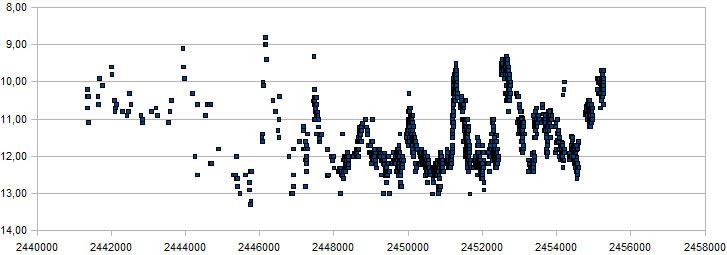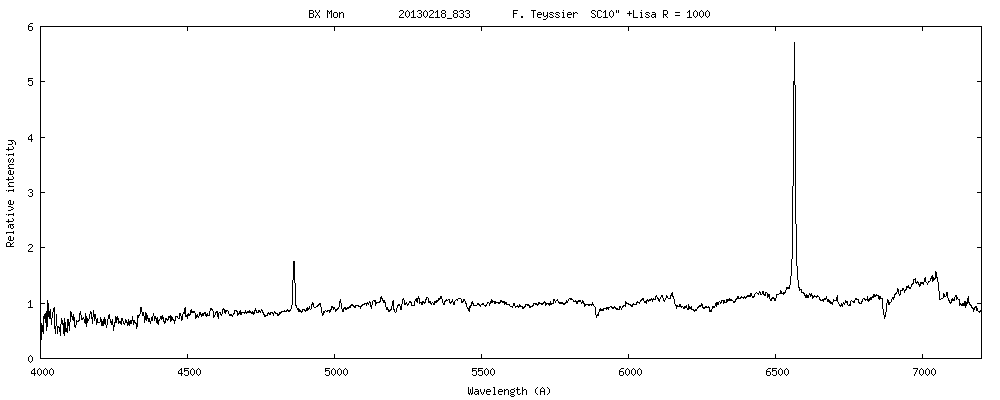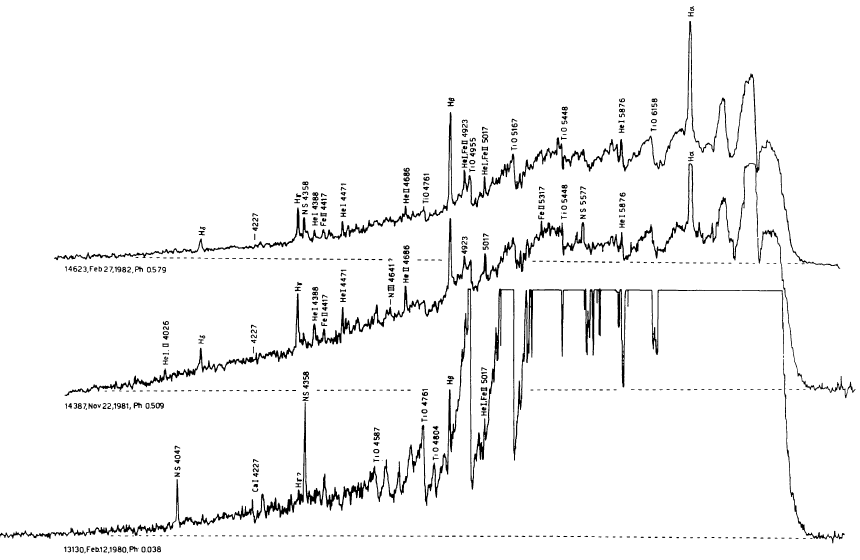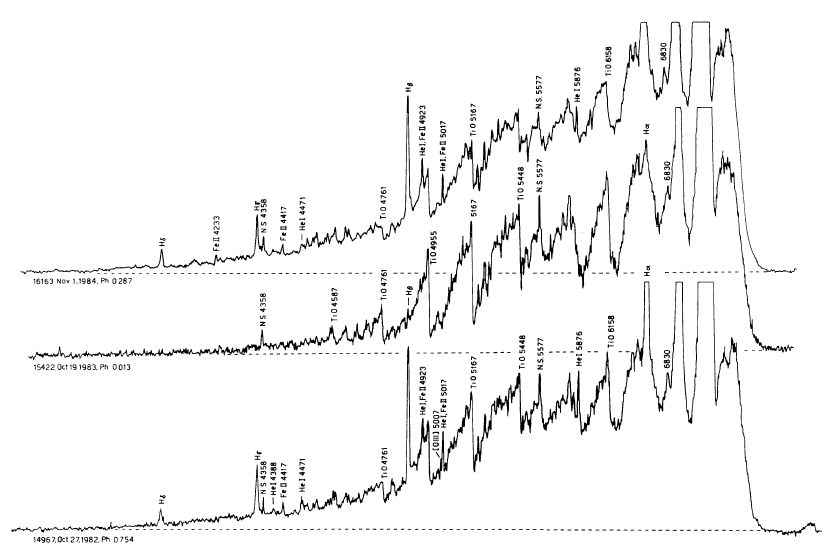Projets Spectroscopie 1
Etoiles Symbiotiques
BX Mon
AD [2000] DE [2000] Mag P Orb [j] Spec BX Mon a été découverte comme variable de longue durée (1380 jours) par Mayall (1940). Merill (1950) met en évidence les raies d'émission HI. Elle est classée comme symbiotique par Bidelmann (1954).
BX Mon montre un spectre d'absorption de type géante M (M5-M6 III) et des raies d'émission intenses HI, HeI, FeII et à certains moment HeII 4686 et [OIII] 5007 (Ijima 1985).Viotti et al. (1985) ont proposé un modèle binaire constitué dd'une géante M7III et d'une composant chaud de type A7-F0
JD (max) = 2412490 + 1380 * E [Mayall, 1940]
JD (max) = 2430345 + 1374 * E [Kukarin, 1958]Courbe luminosité AAVSO
_____ 2013 observations ___________________________________________________________________________________
_____ 2012 observations ___________________________________________________________________________________
Spectres Ijima (1985) avec identification de certaines raies :
Bibliographie
The symbiotic stars
S.J. Kenyo, Cambridge University Press, 1986, 2008Publications
1950ApJ...112...72M
Astrophys. J., 112, 72-89 (1950)
Additional stars whose spectra have a bright H-alpha line.
MERRILL P.W. and BURWELL C.G. 1985A&A...153...35I
Astron. Astrophys., 153, 35-43 (1985)
BX Mon as a long-period eclipsing binary system.
IIJIMA T.1986A&A...159...16V
Astron. Astrophys., 159, 16-21 (1986)
The symbiotic star BX Monocerotis.
VIOTTI R., ALTAMORE A., FERRARI-TONIOLO M., FRIEDJUNG M., PERSI P., ROSSI C. and ROSSI L.




